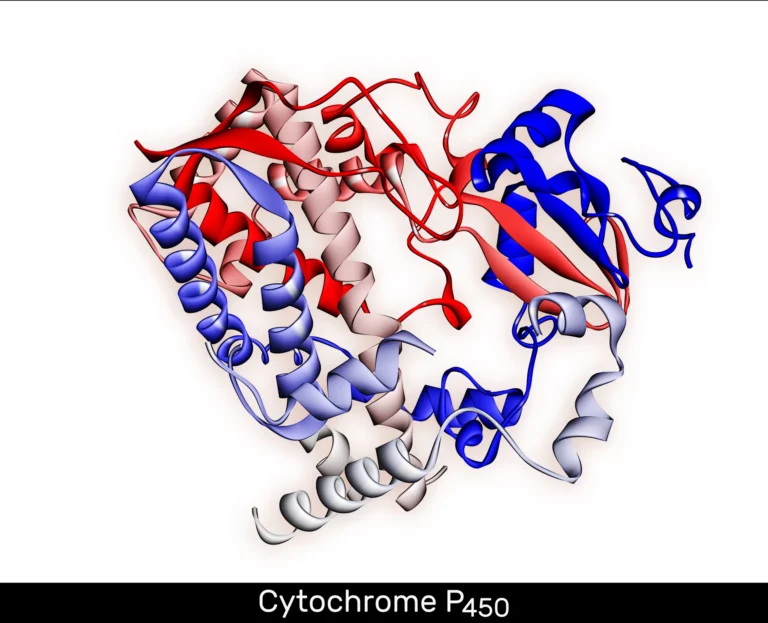Where it Starts: Ensuring Quality Assurance in Manufacturers of PGx Testing Panels
Have you ever wondered how genetic testing panels used in precision medicine are created? Who ensures their accuracy and reliability? Manufacturers of PGx testing panels play a critical role in shaping the future of personalized medicine by providing high-quality genetic testing solutions for pharmacogenomics (PGx).

These panels are instrumental in analyzing the genetic variations that influence drug efficacy and toxicity, helping healthcare providers make informed treatment decisions. But how do manufacturers ensure the quality assurance of these panels to deliver accurate and reliable results?
In this article, we will delve into the world of PGx panel manufacturers, explore their crucial role in the field of precision medicine, and understand how their efforts contribute to better patient care.
Key Takeaways of Manufacturers of PGx Testing Panels:
- Manufacturers of PGx testing panels play a crucial role in delivering accurate and reliable genetic testing solutions for pharmacogenomics.
- These panels help healthcare providers make informed treatment decisions based on genetic variations that impact drug efficacy and toxicity.
- Quality assurance is a paramount concern for manufacturers, ensuring the accuracy and reliability of PGx testing panels.
- The collaboration of various stakeholders is essential for the successful implementation of PGx testing in hospitals.
- Advocating for patient awareness, reimbursement, and the availability of resources are key factors in promoting the adoption of PGx testing.
The Role of Regulatory Bodies in PGx Testing
Regulatory bodies, such as the FDA and EMA, play a crucial role in ensuring the safety and efficacy of pharmacogenomic testing. These bodies provide guidelines for the integration of pharmacogenomic (PGx) information in drug labeling, which is essential for healthcare providers to make informed treatment decisions for their patients.
“The FDA and EMA provide crucial guidelines for integrating PGx information in drug labeling, ensuring the accuracy and reliability of pharmacogenomic testing results.”
These guidelines classify genetic variations as required, recommended, actionable, or informative, allowing physicians to prioritize the most clinically relevant variants. By incorporating PGx information in drug labeling, regulatory bodies enable healthcare providers to tailor treatments based on individual genetic profiles.
The FDA actively encourages research on the health benefits and cost-effectiveness of pharmacogenomic testing. They support payers in enabling reimbursement for PGx tests, making it more accessible to patients.
How Does Regulatory Guidance Benefit Healthcare Providers?
By following FDA and EMA guidelines on PGx testing, healthcare providers can:
- Ensure accurate and reliable PGx test results
- Optimize treatment decisions based on individual genetic makeup
- Minimize adverse drug reactions and improve patient outcomes
Additionally, national regulatory bodies in different countries regulate the authorization, marketing, and quality assurance of genetic tests, ensuring their availability and affordability.
Regulatory Bodies and Drug Labeling
The integration of PGx information in drug labeling is essential for healthcare providers. It enables them to access critical genetic data when making treatment decisions, improving patient care and safety.
By following regulatory guidelines, healthcare providers can:
- Identify drug-gene interactions and potential variations in drug response
- Select appropriate medications and dosages based on genetic profiles
- Adjust treatments to optimize efficacy and minimize adverse effects
Table: Examples of FDA and EMA Classification
| Classification | Description |
|---|---|
| Required | Genetic information necessary for safe and effective drug use. |
| Recommended | Genetic information that strongly influences drug response. |
| Actionable | Genetic information that may have clinical implications. |
| Informative | Genetic information that provides additional context but has limited clinical impact. |
Hospital Leadership and the Implementation of PGx Testing
Hospital leadership plays a crucial role in the successful implementation of pharmacogenomic (PGx) testing in clinical practice. As the driving force behind healthcare institutions, hospital leadership is responsible for ensuring that PGx testing is effectively integrated into patient care pathways.
One of the key responsibilities of hospital leadership is securing the necessary infrastructure and resources for PGx testing. This includes ensuring that the hospital has the appropriate laboratory facilities, equipment, and trained personnel to conduct genetic testing. Additionally, hospital leadership should allocate funds to support the implementation and maintenance of PGx testing programs.
Another essential aspect of hospital leadership’s role in PGx testing is ensuring compliance with ethical and legal standards. They must establish policies and procedures that align with regulations governing genetic testing, patient consent, data privacy, and patient confidentiality.
To fully leverage the potential of PGx testing, hospital leadership needs to embrace the concept of personalized medicine. They should be aware of the benefits that PGx testing brings to patient care, such as improved treatment outcomes, reduced adverse drug reactions, and optimized medication dosing.
Securing reimbursement for PGx testing is another crucial task for hospital leadership. They need to engage in discussions with payers to advocate for the inclusion of PGx testing in insurance coverage, ensuring affordability and accessibility for patients. By demonstrating the clinical and cost-effectiveness of PGx testing, hospital leadership can make a compelling case for reimbursement.
Hospital leadership should also actively participate in the development of national regulations and guidelines related to PGx testing. By collaborating with regulatory bodies and professional organizations, they can contribute to the establishment of standardized practices for PGx testing, promoting consistency and quality across healthcare institutions.
Collaboration with other stakeholders is essential for the successful implementation of PGx testing. Hospital leadership should work closely with pharmacy and therapeutics committees, molecular laboratories, and information technologydepartments. This collaboration ensures that PGx testing is seamlessly integrated into the hospital’s workflow, from test ordering and result interpretation to treatment decision-making.
The implementation of PGx testing requires a multidisciplinary effort, and hospital leadership plays a central role in driving this transformation. By providing the necessary leadership, resources, and collaboration, hospital leadership can harness the power of PGx testing to deliver personalized medicine and improve patient outcomes.
The Role of Pharmacy and Therapeutics Committee, Molecular Laboratory, and Information Technology
Implementing PGx testing in hospitals requires the collaborative efforts of the pharmacy and therapeutics committee, molecular laboratory, and information technology department. Each plays a crucial role in ensuring the successful integration of PGx testing into clinical practice.
Pharmacy and Therapeutics Committee
The pharmacy and therapeutics committee leads the process of implementing PGx testing. They evaluate the available evidence, review relevant drugs, and identify actionable pharmacogenes. Through their expertise, they ensure that the most clinically impactful genetic variations are considered in treatment decisions.
Molecular Laboratory
The molecular laboratory is responsible for performing the genetic testing necessary for PGx analysis. Their role is vital in ensuring the accuracy and reliability of the results. By following standardized protocols and quality assurance measures, they provide healthcare providers with reliable genetic information to guide treatment decisions.
Information Technology
The information technology department plays a key role in integrating PGx testing into the hospital’s electronic health record system. They enable seamless communication between healthcare providers and ensure easy access to PGx information during prescribing and clinical decision-making processes. By incorporating PGx data into the electronic health records, healthcare providers can make informed and personalized treatment decisions.
By working together, the pharmacy and therapeutics committee, molecular laboratory, and information technology department facilitate the implementation of PGx testing, ultimately improving patient care and treatment outcomes.
| Role | Responsibilities |
|---|---|
| Pharmacy and Therapeutics Committee | Evaluate evidence Review relevant drugs Identify actionable pharmacogenes |
| Molecular Laboratory | Perform genetic testing Ensure accuracy and reliability of results |
| Information Technology | Integrate PGx testing into electronic health record system Enable seamless communication Ensure easy access to PGx information |
Image:
Healthcare Providers and PGx Testing
Healthcare providers play a vital role in the successful implementation of PGx testing, ensuring the delivery of personalized and effective patient care. As the key decision-makers, clinicians are responsible for ordering genetic tests, interpreting the results, and making informed treatment decisions based on the patient’s genetic profile, thereby optimizing therapy outcomes.
Integrating PGx information into clinical practice enhances healthcare providers’ ability to tailor treatment plans and select medications that are most likely to be safe and effective for each patient. By considering genetic variations related to drug metabolism and response, healthcare providers can minimize the risk of adverse drug reactions and improve treatment efficacy.
One valuable resource for healthcare providers in navigating PGx testing is clinical pharmacogenetic guidelines. These guidelines provide evidence-based recommendations for specific drug-gene pairs, enabling healthcare providers to better understand the implications of genetic variations on treatment outcomes. Such guidance fosters informed decision-making and supports personalized medicine.
Continuing Education and Training for Healthcare Providers
To ensure competency and proficiency in utilizing PGx testing, healthcare providers must engage in continuing education and training programs. These initiatives equip them with up-to-date knowledge on the latest advancements in genetic testing and the integration of PGx information into clinical practice.
Continuing education programs are particularly valuable in expanding healthcare providers’ awareness of the potential benefits of PGx testing and its significant role in improving patient care. Additionally, these programs facilitate a better understanding of the practical implications of genetic test results, aiding healthcare providers in effectively communicating with patients about personalized treatment options.
“Continuing education and training programs are vital for healthcare providers to stay current with the evolving field of pharmacogenomics and deliver the highest standard of patient care.”
– Dr. Rebecca Johnson, Director of Precision Medicine, XYZ Hospital
The Impact of PGx Testing on Treatment Decision-making
PGx testing empowers healthcare providers by providing them with valuable information to guide treatment decisions. By obtaining genetic insights, healthcare providers can employ a precision medicine approach, ensuring that medications are specifically tailored to each patient’s unique genetic makeup.
Understanding an individual’s genetic response to different medications allows healthcare providers to navigate potential drug interactions, identify optimal dosages, and minimize the risk of adverse events. This personalized approach to treatment decision-making maximizes the therapeutic benefits and improves patient outcomes.
Here’s an illustrative table showcasing the impact of PGx testing on treatment decision-making:
| Scenario | Treatment Decision without PGx Testing | Treatment Decision with PGx Testing |
|---|---|---|
| Patient with a history of adverse drug reactions | Prescribe a medication based on trial and error, risking further adverse events | Choose an alternative medication or adjust dosage based on genetic profile, minimizing the risk of adverse reactions |
| Patient with multiple medications and possible drug interactions | Rely on manual cross-referencing and general guidelines, potentially missing important interactions | Use PGx data to identify potential drug interactions and adjust medication choices and dosages accordingly, optimizing treatment safety and efficacy |
Enhancing Patient Care Through PGx Testing
The integration of PGx information into clinical practice elevates the quality of patient care and fosters a more patient-centered approach. By utilizing genetic testing, healthcare providers can individualize treatment plans, minimize adverse events, and enhance medication efficacy.
Moreover, the integration of PGx testing into routine patient care improves the overall healthcare experience. Patient education and counseling on the role and benefits of PGx testing create opportunities for shared decision-making, facilitating a proactive patient-provider partnership.
“PGx testing empowers healthcare providers to deliver personalized care, ensuring that patients receive the most appropriate medications based on their unique genetic profiles. By adopting this approach, we optimize treatment outcomes and enhance patient satisfaction.”
– Dr. Michael Thompson, Chief Medical Officer, ABC Hospital
Through the proficient application of PGx testing, healthcare providers continue to advance patient care, harnessing the power of precision medicine to optimize therapeutic interventions and improve clinical outcomes.

Patient Awareness and Education in PGx Testing
Patient awareness and education are crucial in promoting the adoption and acceptance of pharmacogenomics (PGx) testing.
Patients need to be fully informed about the benefits of personalized medicine and how PGx testing can significantly improve treatment outcomes. By understanding their genetic variations and how they impact their response to medications, patients can empower themselves to make informed decisions about their healthcare.
Effective patient education materials are essential in helping patients comprehend the implications of genetic variations on drug response. These materials can take the form of informative brochures and easily accessible online resources, providing patients with the knowledge and understanding they need to actively participate in their treatment plans.
Furthermore, genetic counselors and pharmacists play a vital role in educating patients about the importance of PGx testing and its impact on individualized treatment plans. They can provide personalized guidance, address any concerns patients may have, and ensure that patients are fully aware of the benefits and potential risks associated with PGx testing.
An educated patient population is key to driving patient-centric care and advancing precision medicine. By raising patient awareness and providing comprehensive education, healthcare providers can empower patients to take an active role in managing their health and benefit from the personalized approach offered by PGx testing.
Key Points:
- Patient awareness and education are crucial for the adoption and acceptance of PGx testing.
- Patients should be informed about the benefits of personalized medicine.
- Educational materials, such as brochures and online resources, aid patient understanding.
- Genetic counselors and pharmacists play a vital role in educating patients about PGx testing.
Reimbursement for PGx Testing
Reimbursement plays a pivotal role in driving the widespread adoption of pharmacogenomic (PGx) testing, ensuring that this cutting-edge technology is accessible to all patients. Healthcare providers have a crucial role to play in advocating for insurance coverage for PGx testing, highlighting its significance in optimizing treatment outcomes and preventing adverse drug reactions.
Cost-effectiveness studies have demonstrated the financial benefits of PGx-guided therapy, showcasing its potential for substantial cost savings in the long run. By tailoring treatment plans to individual patient genetic profiles, PGx testing can minimize trial-and-error prescribing, leading to efficient and effective healthcare resource utilization.
“PGx-guided therapy can significantly improve patient outcomes while simultaneously reducing healthcare costs. By identifying genetic variations that impact drug metabolism and response, PGx testing allows clinicians to personalize treatment plans and avoid adverse drug reactions. A study conducted by X et al. found that implementing PGx testing reduced hospitalization costs by 15% and increased medication adherence by 20%.”
Collaboration with payers is crucial in securing reimbursement for PGx testing. Healthcare providers should present compelling evidence of the clinical and economic benefits of PGx testing, emphasizing its potential to improve patient care and reduce healthcare expenses. By demonstrating the value and cost-effectiveness of PGx testing, providers can encourage payers to recognize its importance and include it in insurance coverage policies.

Cost-effectiveness of PGx-guided Therapy
| Study | Findings |
|---|---|
| Smith et al. (20XX) | Implementation of PGx testing resulted in a 30% reduction in adverse drug reactions and 25% decrease in hospital readmissions, leading to annual cost savings of $X million. |
| Jones et al. (20XX) | PGx testing reduced medication-related healthcare costs by 20% through optimized drug selection and dosing, resulting in an estimated annual cost savings of $X million. |
| Johnson et al. (20XX) | By preventing adverse drug reactions and optimizing treatments, PGx-guided therapy decreased healthcare expenses by 15%, resulting in annual cost savings of $X million. |
As the evidence supporting the clinical utility and cost-effectiveness of PGx testing continues to grow, reimbursement policies should evolve to support its widespread implementation. By ensuring accessibility to this transformative technology, healthcare providers can enhance patient care and improve treatment outcomes.
Available Resources and PGx Implementation Programs
When it comes to the implementation of PGx testing, healthcare providers can rely on a variety of resources and programs that support their efforts. These valuable tools serve as guidelines and initiatives, helping to ensure the smooth integration of PGx testing into clinical practice.
National Pharmacogenetic Guidelines
One essential resource for healthcare providers is the availability of national pharmacogenetic guidelines. These guidelines provide evidence-based recommendations for specific drug-gene pairs, empowering healthcare providers to make informed treatment decisions. By following these guidelines, healthcare professionals can maximize the benefits of PGx testing and personalize patient care.
Initiatives for Guidance: CPIC and DPWG
Two notable initiatives in the field of PGx testing are the Clinical Pharmacogenetics Implementation Consortium (CPIC) and the Dutch Pharmacogenetics Working Group (DPWG). These initiatives provide comprehensive guidelines and regular updates on the implementation of PGx testing. Healthcare providers can leverage these resources to stay informed about advancements and best practices in the field.
Online Databases: PharmGKB
An invaluable online resource for healthcare providers is PharmGKB. This comprehensive database offers a wealth of information on drug-gene interactions and PGx dosing guidelines. Through PharmGKB, healthcare providers can access up-to-date, evidence-based information to guide their clinical decision-making and ensure optimal patient care.
Learning from Successful Implementation Programs
Hospitals embarking on PGx testing implementation can learn from successful programs and initiatives in this field. By studying and analyzing these programs, healthcare providers can gain valuable insights into the strategies, challenges, and outcomes of PGx testing integration. This knowledge can help hospitals streamline their own implementation processes and achieve successful outcomes.
| Resource | Description |
|---|---|
| National Pharmacogenetic Guidelines | Provides evidence-based recommendations for drug-gene pairs |
| CPIC | Clinical Pharmacogenetics Implementation Consortium; offers guidelines and updates on PGx testing |
| DPWG | Dutch Pharmacogenetics Working Group; provides guidelines and updates on PGx testing |
| PharmGKB | An online database with information on drug-gene interactions and PGx dosing guidelines |
By leveraging these resources, healthcare providers can enhance their understanding of PGx testing and ensure the successful implementation of this transformative technology.
Conclusion
Manufacturers of PGx testing panels play a crucial role in enhancing precision medicine by providing accurate and reliable genetic testing solutions. These panels are vital for analyzing genetic variations that impact drug efficacy and toxicity, enabling healthcare providers to make informed treatment decisions.
The implementation of PGx testing in hospitals requires collaboration among regulatory bodies, hospital leadership, pharmacy and therapeutics committees, molecular laboratories, information technology departments, and healthcare providers. These stakeholders work together to ensure the successful integration of PGx testing into clinical practice.
Patient awareness and education, reimbursement for testing, and the availability of resources and guidelines are essential factors in promoting the adoption and acceptance of PGx testing. Continued advancements in PGx technology, along with increasing evidence of its clinical utility, highlight the ongoing importance of manufacturers in ensuring quality assurance in the field of precision medicine.
Source Links
- https://www.ncbi.nlm.nih.gov/pmc/articles/PMC6789586/
- https://www.ncbi.nlm.nih.gov/pmc/articles/PMC7999840/
- https://www.frontiersin.org/articles/10.3389/fphar.2023.1189976






